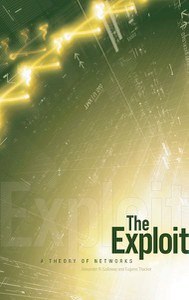Node Control
Stacey Mason

I recently read Galloway and Thacker’s chapter on “Nodes” from The Exploit: A Theory of Networks on the systems of power and control within network structures. Borrowing terms from graph theory, “nodes” correspond to what we would call lexia, “edges” connect the nodes, and networks can be described in terms of their “order” or how many nodes they contain, or their “size” which relates to their edges. Networks can also be described in terms of their connectivity (the interconnectedness of the nodes) and their topology (how centralized or decentralized the structure is based on which nodes are linked to which).
A huge portion of the essay is spent on the idea of “protocol” in both the familiar, computer science sense, but more importantly as a broader concept that encompasses that understanding—the protocol is the set of rules and standards that governs the network. The protocol exists in a tension between functioning as an emergent governing force, and one that can be externally imposed by, say, a system administrator or by the design of the network itself.
Galloway and Thacker have an interesting idea of control—influenced by Delueze—through modulation. They argue that in node structures, control is no longer dictated from a central figure (and even the protocol control structure is not an all-encompassing power), but rather “emerge through the complex relationships between autonomous, interconnected agents.(29)”
Within the hypertext literary community, there has been much debate over the idea of “authorship” within interactive work, the argument being that when you give the reader agency to maneuver within the story, she becomes a co-author of the work. This argument has met resistance from authors who insist that in building the framework of the piece, they are in fact, allowing the reader only the impression of agency, and thus maintain full authorial control. Viewing hypertext literature as a series of nodes , and the author’s embedded link structure as the piece’s protocol, it becomes easy to see how “control is not simply manipulation, but rather modulation” (33). The author may not be forcing the reader into a specific choice (manipulation), but she is directing the reader through a series of diegetic choices and constraints (modulation).
